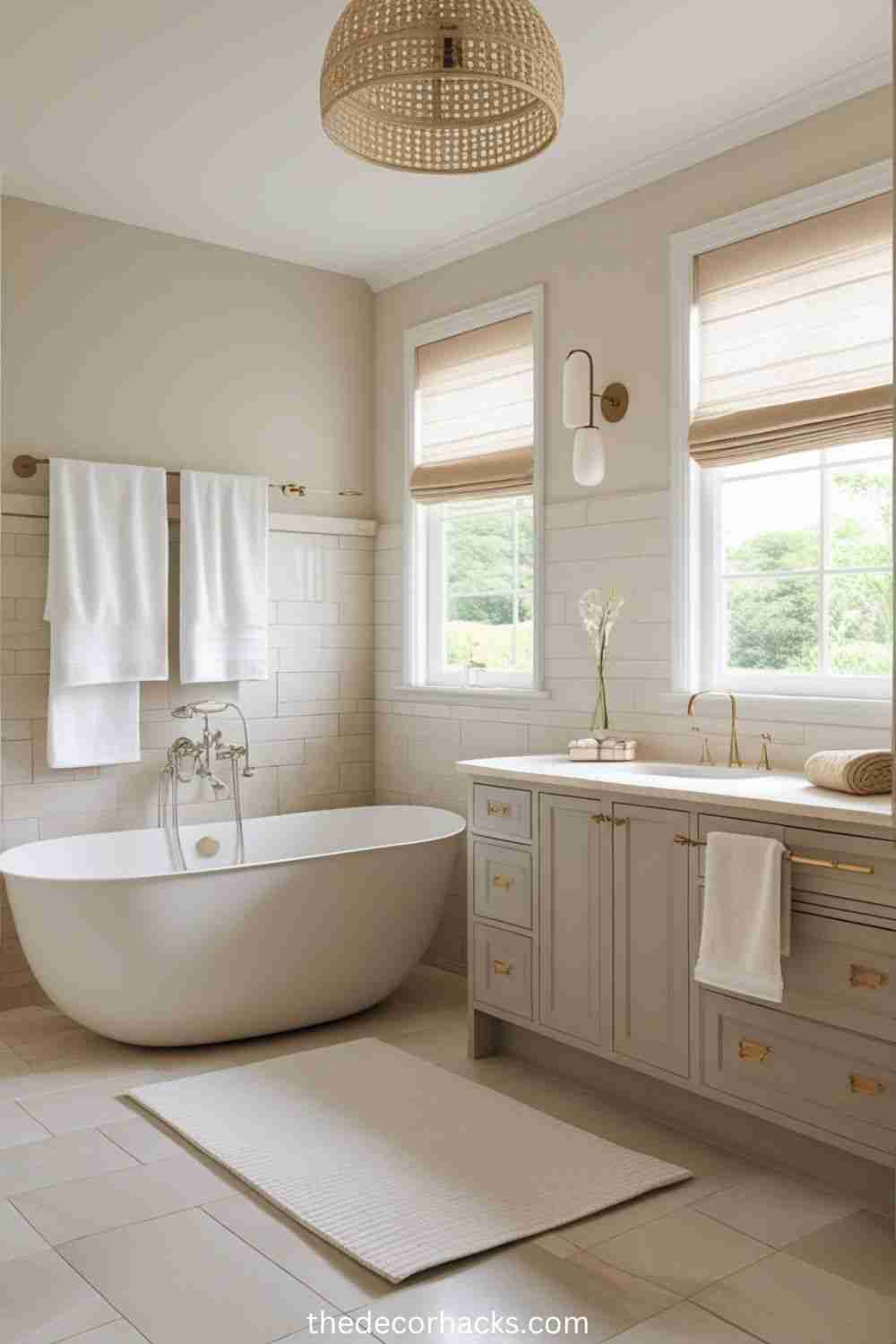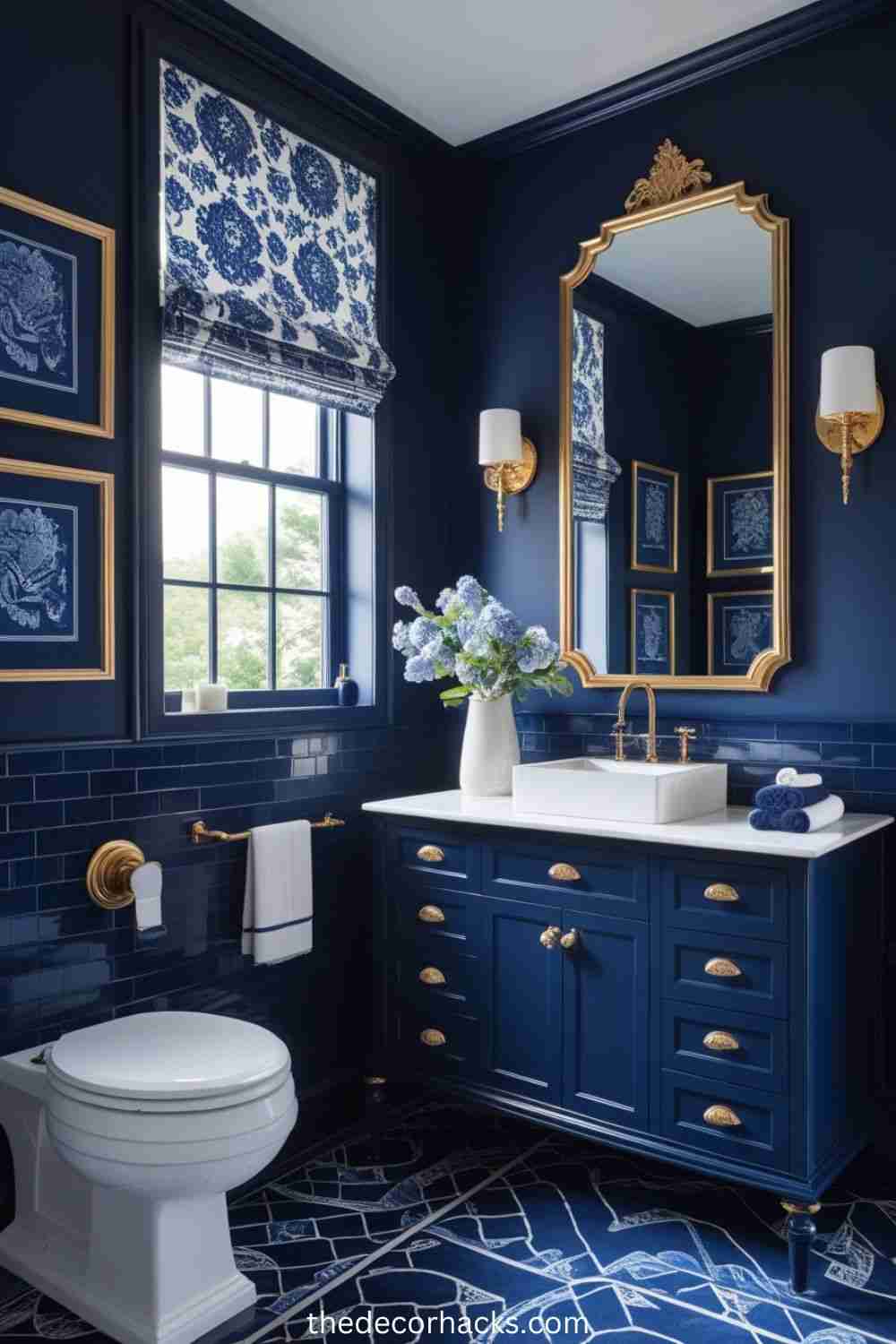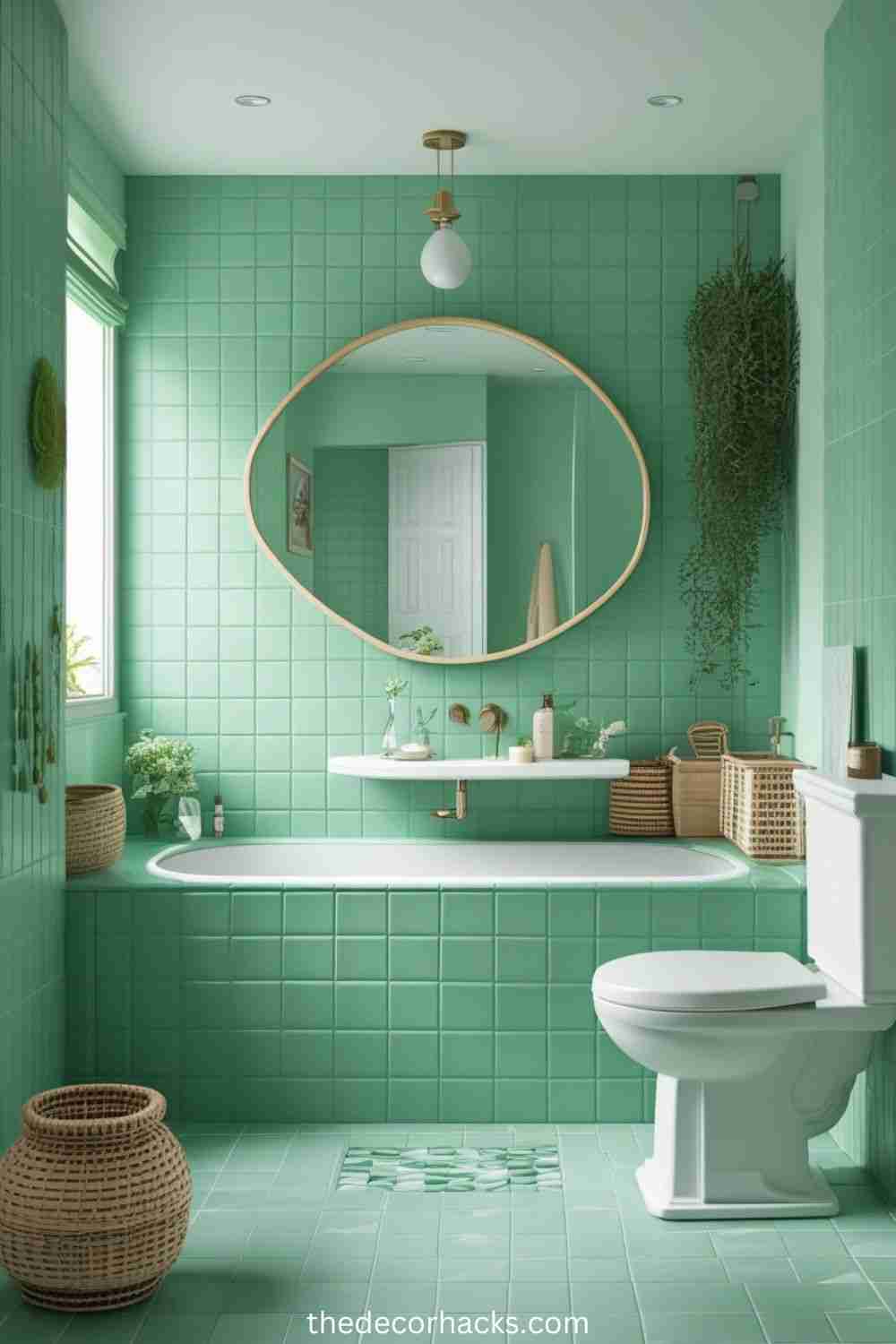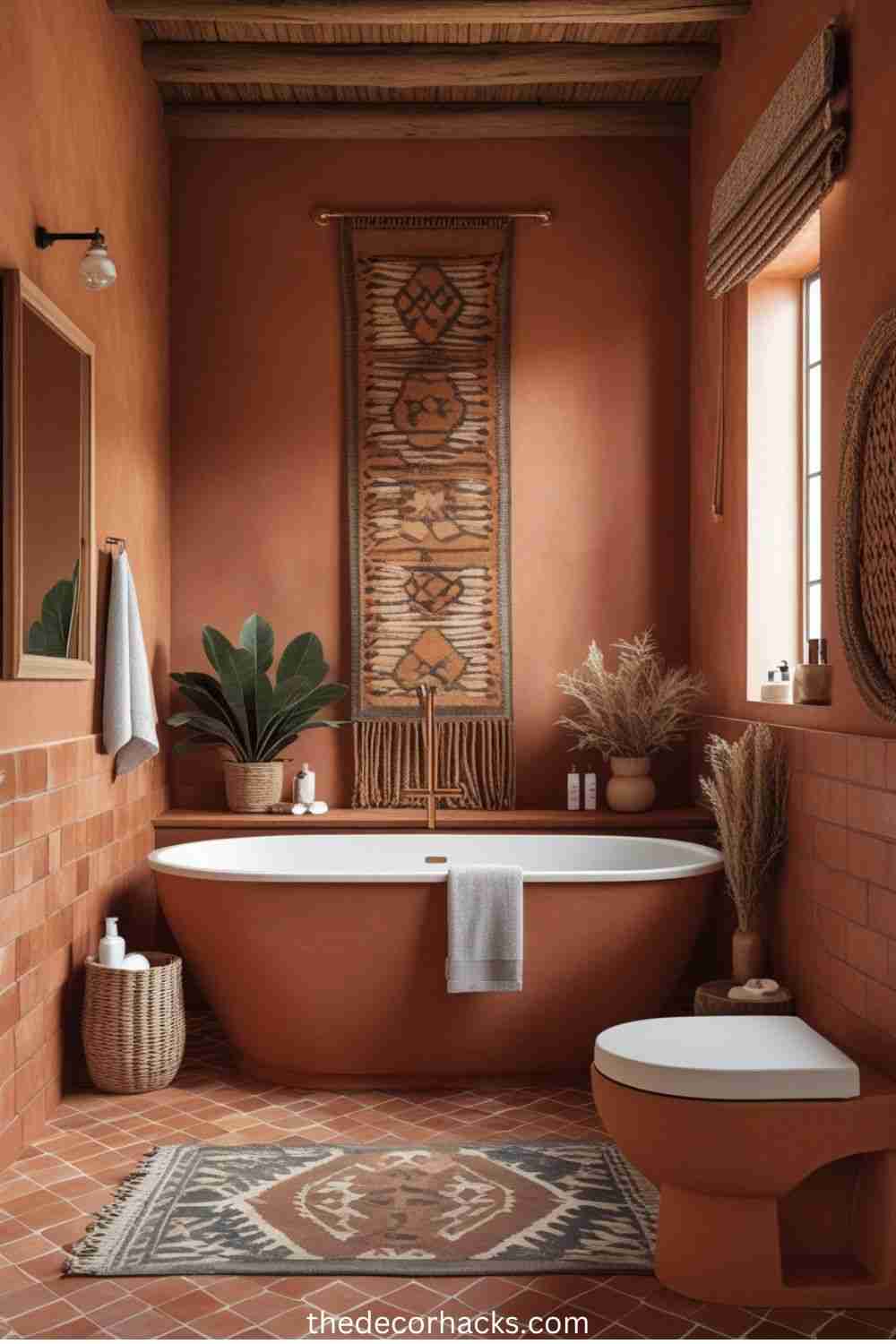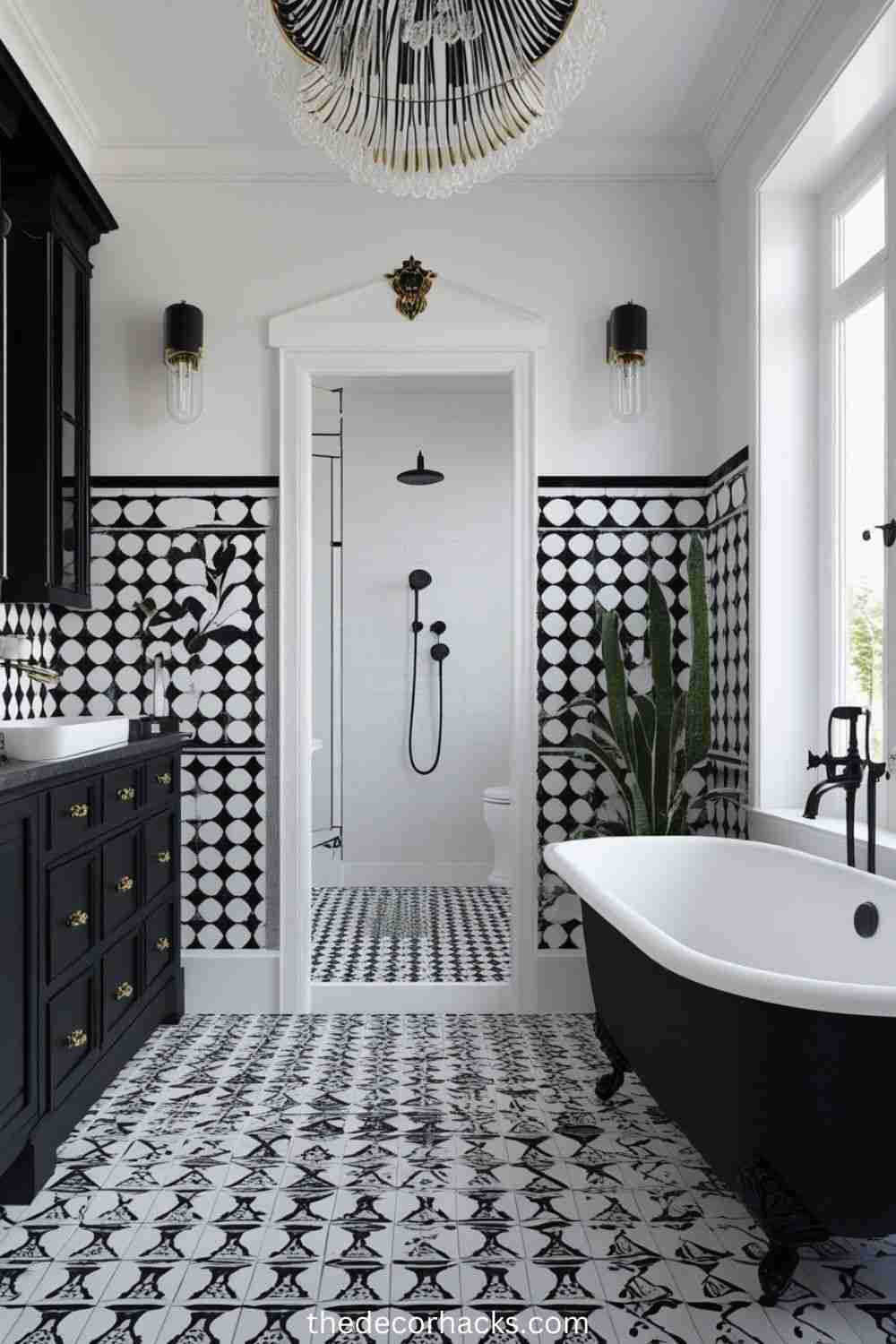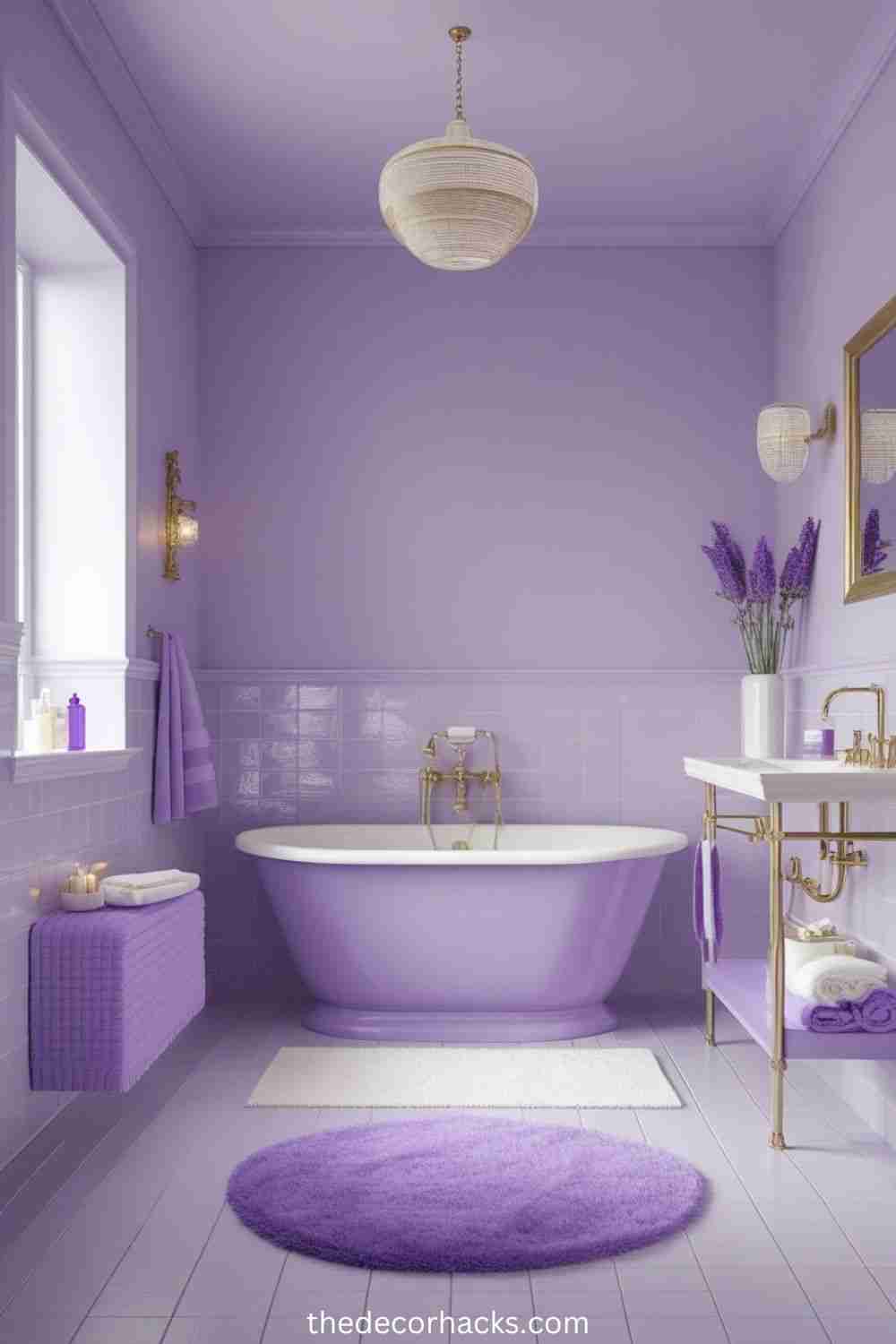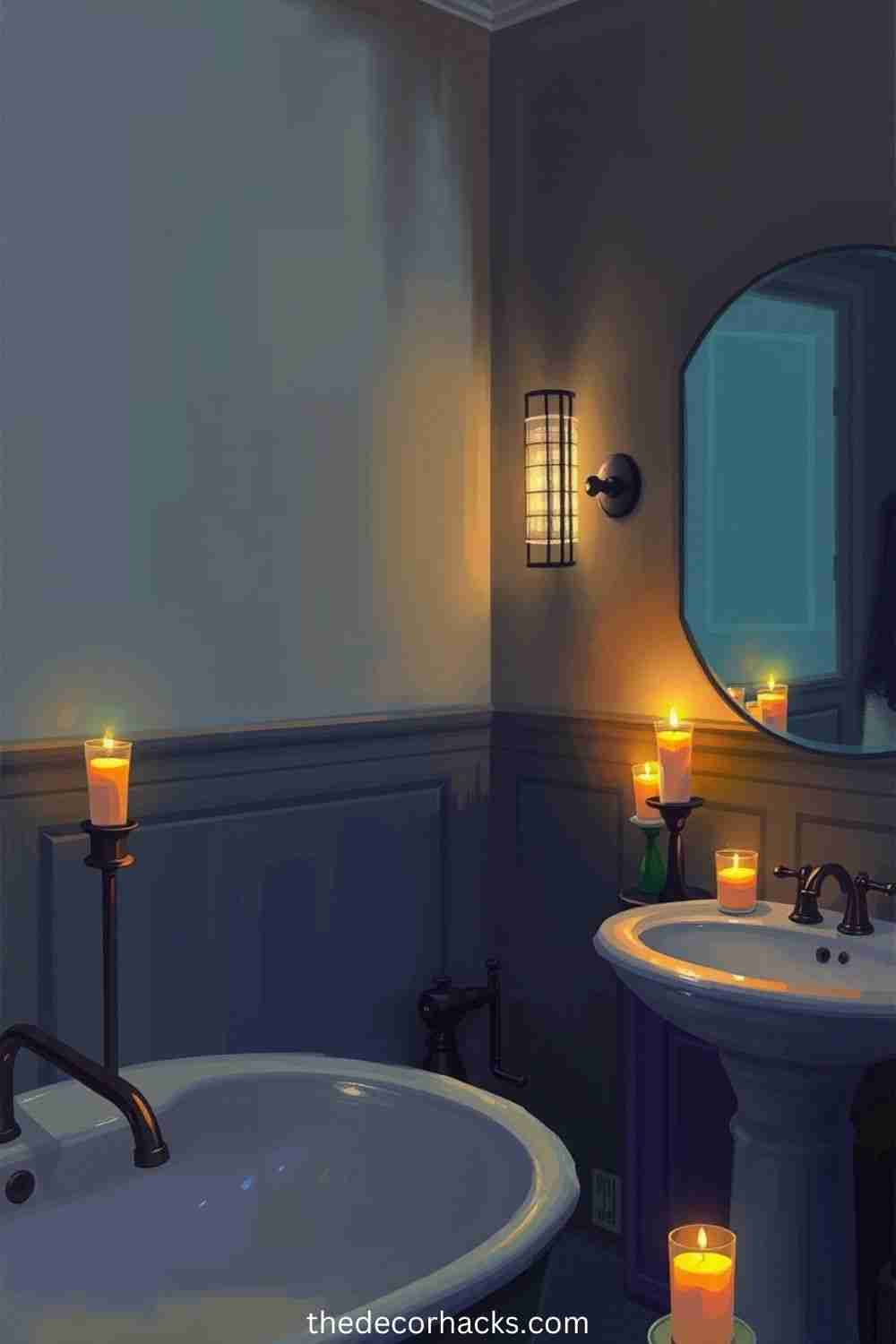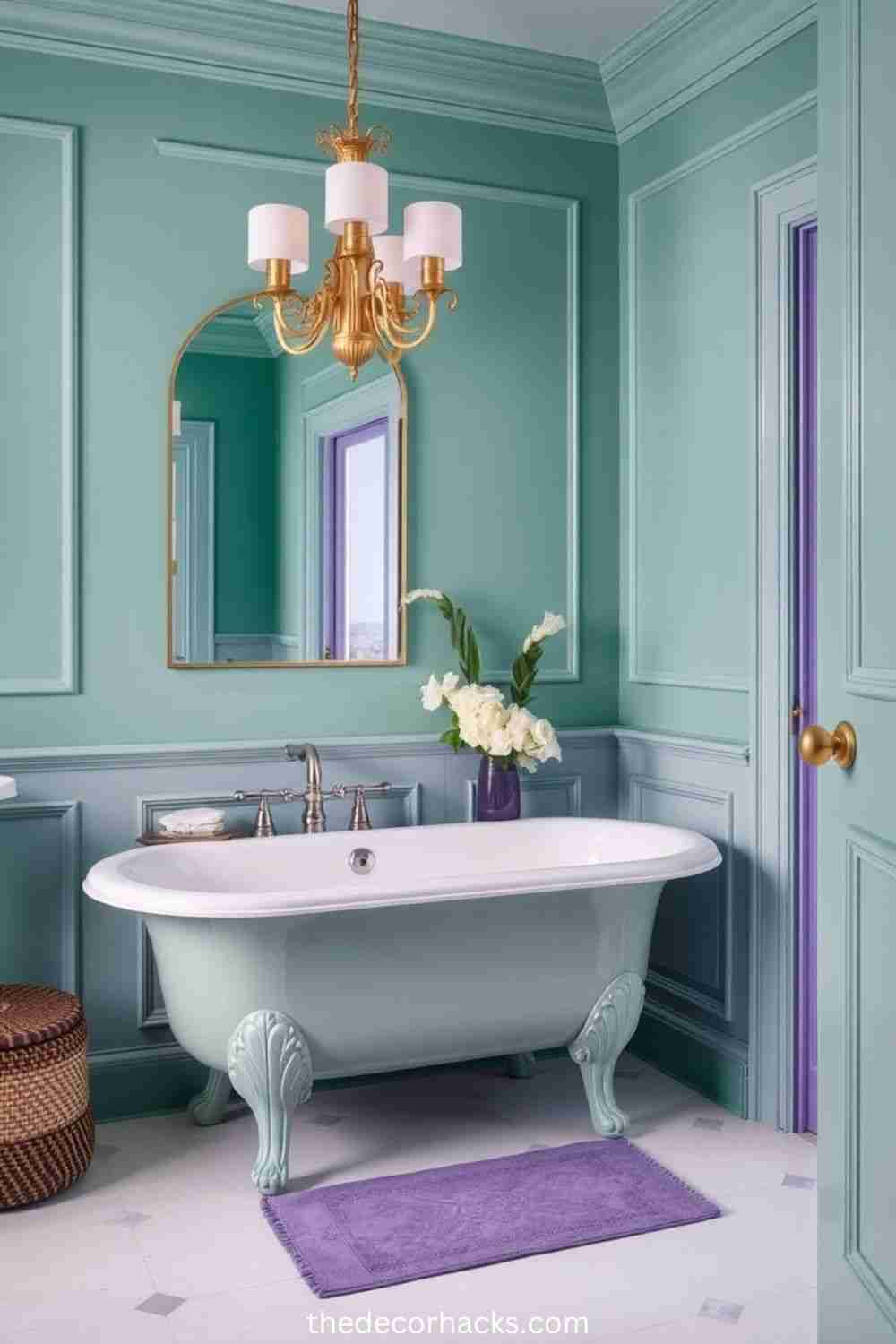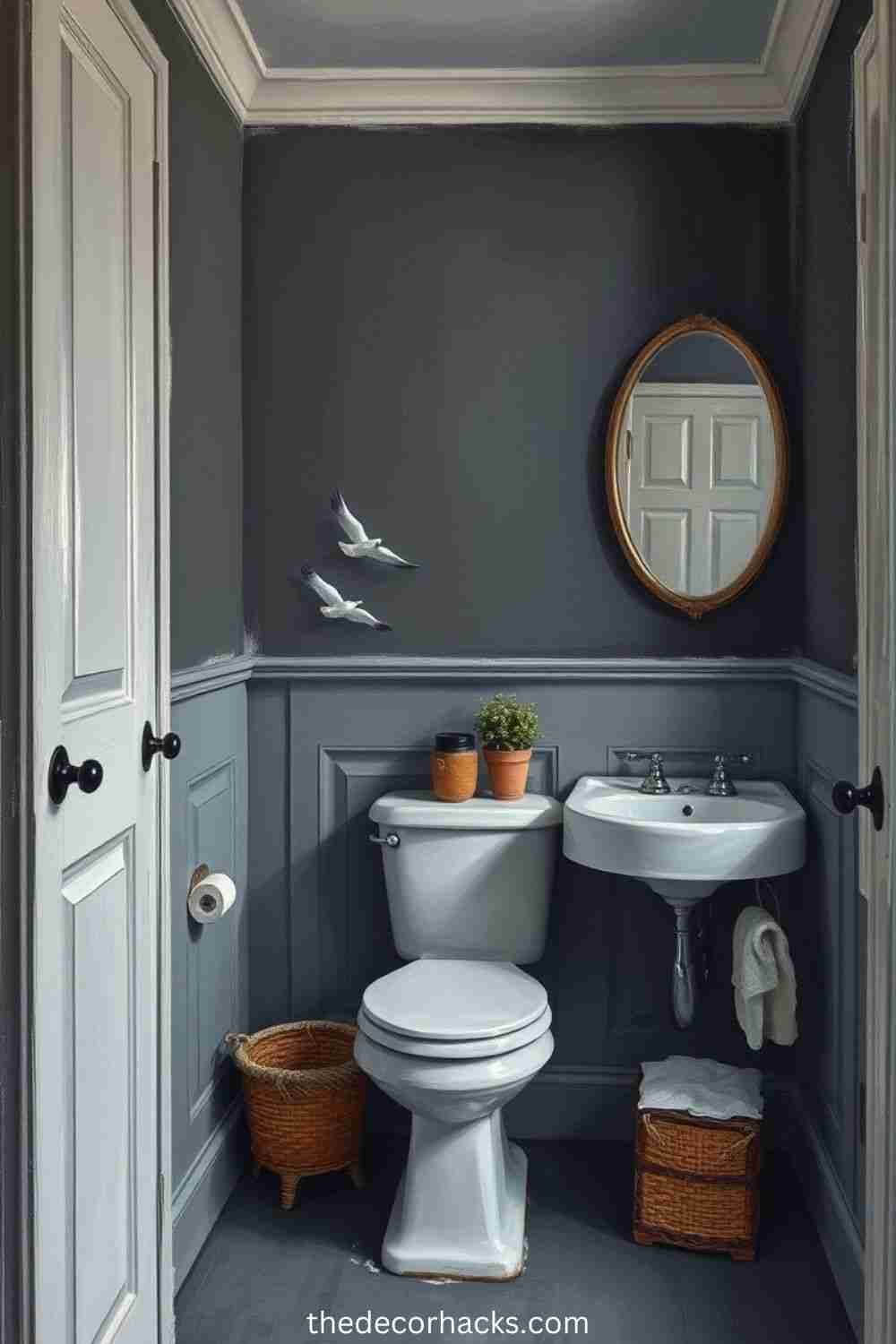When it comes to bathroom design, color plays a crucial role in shaping the space’s overall feel and functionality. The right bathroom color can instantly transform a dull, cramped area into a relaxing sanctuary or a stylish, vibrant retreat. From creating a serene, spa-like atmosphere to making a small bathroom appear larger, color has the power to influence not only the ambiance but also the mood of those who use it. Whether you’re looking to brighten up a small powder room or add sophistication to a master bath, exploring various Bathroom Color Ideas is the first step toward creating a space that’s both functional and visually appealing. In this article, we’ll explore 15 stunning color choices that will elevate your bathroom and help you create a space you’ll love.
Sunning Bathroom Color Ideas
Soft Neutral Tones
Soft neutral tones, such as whites, creams, light grays, and beige, are a timeless choice for bathrooms. These colors create a calm, airy atmosphere, making them ideal for creating a spa-like retreat. Neutrals offer a versatile foundation that complements various bathroom styles, from minimalist to traditional. By using soft shades on the walls, tiles, or cabinetry, you can effortlessly brighten up smaller spaces and make them feel more open. To add visual interest, you can pair neutrals with contrasting accent colors or natural elements, like wood or stone, to create depth and warmth. Soft neutral tones also work well with a wide range of textures, making it easy to personalize the space with towels, rugs, and fixtures that reflect your unique style.
Bold Navy Blue
Navy blue is a bold yet sophisticated color that adds depth and drama to any bathroom. Its rich, calming hue evokes a sense of luxury and elegance, making it perfect for creating a striking focal point. Navy works beautifully in larger bathrooms or those with natural light, where its intensity can be balanced with lighter accents. Pairing navy blue with gold, brass, or silver fixtures enhances its opulence and creates a timeless, high-end look. For a more contemporary feel, combine navy with crisp whites or soft grays to maintain a modern balance. Whether on the walls, as an accent color, or in statement pieces like a navy vanity or tile, this versatile shade makes a bold statement while still being surprisingly calming and welcoming.
Vibrant Mint Green
Vibrant mint green is a refreshing and energetic color that brings a playful yet calming vibe to your bathroom. This cool, soothing shade evokes feelings of tranquility while adding a touch of brightness to the space. Mint green works especially well in smaller or medium-sized bathrooms, where it can create a sense of openness and freshness. To keep the look balanced, pair mint with white or soft beige for a clean, airy feel. For a more bold and modern touch, combine it with darker tones like charcoal or navy for contrast. Mint green also pairs beautifully with natural textures, such as wood or marble, which enhance its fresh, organic feel. Whether used on the walls, tiles, or accessories, mint green is a versatile and energizing choice that helps create a lively, rejuvenating atmosphere.
Earthy Terracotta
Earthy terracotta tones bring warmth and rustic charm to any bathroom, creating a cozy, inviting atmosphere. This rich, earthy color has a natural, grounded feel that works particularly well in Mediterranean, boho, or rustic-inspired designs. Terracotta tiles, accents, or walls introduce a sense of earthy elegance, and when paired with natural materials like wood, stone, or woven textures, it enhances the organic feel of the space. The warmth of terracotta is perfect for creating a balanced contrast with cooler tones, such as light grays or whites, while maintaining a welcoming, earthy ambiance. Its versatility allows it to be used in a variety of bathroom styles—from traditional to more modern interpretations—making it a timeless choice for those seeking a comforting yet stylish space.
Classic Black and White
The classic combination of black and white is timeless, offering a sophisticated and elegant look that never goes out of style. This bold duo creates a striking contrast, making it ideal for modern, minimalist, or even vintage-inspired bathrooms. Black accents, such as fixtures, tiles, or cabinetry, add drama and depth, while white walls or tiles help to brighten the space and create a sense of openness. This color scheme is versatile, allowing you to play with patterns and textures, such as black-and-white geometric tiles, to add visual interest. For a more luxurious touch, pair the monochrome palette with metallic elements like gold or chrome. Whether you’re designing a sleek, contemporary bathroom or a classic, vintage-inspired retreat, the black-and-white combination is a powerful design choice that always exudes elegance and timeless appeal.
Soft Lavender
Soft lavender is a gentle and soothing color that brings a touch of elegance and tranquility to your bathroom. This light purple hue creates a serene, spa-like atmosphere, making it perfect for those looking to unwind and relax. Lavender works wonderfully in bathrooms of all sizes, as it has the ability to open up small spaces while maintaining a calm and inviting vibe. Pairing lavender with neutral shades like whites, grays, or soft beige can enhance its delicate charm without overwhelming the space. For a more bold design, lavender can also be combined with deeper purples or contrasting accents like silver or gold for a more luxurious feel. Whether used on the walls, tiles, or accessories, soft lavender offers a refined and peaceful ambiance, ideal for creating a bathroom you’ll want to spend time in.
Warm Taupe
Warm taupe is an understated yet luxurious color that exudes elegance and sophistication. This neutral shade, with its subtle blend of gray, brown, and beige, creates a cozy and inviting atmosphere in the bathroom. Taupe is versatile and complements a wide range of design styles, from contemporary to traditional. Its warmth adds depth and richness to the space, making it perfect for creating a comfortable, serene retreat. Taupe works beautifully when paired with soft whites or muted pastels for a balanced, harmonious look. For a more striking contrast, combine taupe with darker tones like charcoal or deep navy. This color also pairs wonderfully with natural textures such as wood, stone, or marble, bringing an organic yet polished feel to the bathroom. Whether used for walls, tiles, or cabinetry, warm taupe adds a timeless elegance that makes the bathroom feel both sophisticated and welcoming.
Refreshing Seafoam Green
Refreshing seafoam green is a light, airy color that brings a calming and beachy vibe to your bathroom. This soft green-blue shade evokes the tranquility of the ocean, making it perfect for creating a serene, spa-like atmosphere. Seafoam green works well in both small and large bathrooms, as it has the ability to open up a space while maintaining a refreshing, relaxing ambiance. Pair it with white or light beige for a crisp, coastal look, or add deeper tones like navy or slate gray for a bolder, more sophisticated contrast. The soft, cool undertones of seafoam green complement natural materials like driftwood, marble, or stone, enhancing its organic and coastal appeal. Whether used on the walls, tiles, or as an accent color in accessories, seafoam green infuses your bathroom with a refreshing, peaceful energy that feels both modern and timeless.
Moody Charcoal Gray
Moody charcoal gray is a dramatic, contemporary color that brings sophistication and depth to any bathroom. This dark, rich hue exudes a sense of elegance and mystery, making it ideal for creating a modern, sleek bathroom design. Charcoal gray works particularly well in larger spaces, where its bold tone can be balanced with lighter accents or natural light. Pair it with white, silver, or gold fixtures for a striking contrast, or add warmth by combining it with wooden elements for a more organic feel. Charcoal gray can also be used to highlight specific areas, such as an accent wall or cabinetry, allowing the color to create visual interest without overwhelming the space. For a truly luxe look, incorporate glossy tiles, metallic accents, or textured finishes that catch the light. Whether you choose to go bold with charcoal on all walls or use it sparingly as an accent, this moody shade brings a refined, contemporary touch to your bathroom design.
Soft Peach
Soft peach is a warm, inviting color that adds a touch of gentle vibrancy to any bathroom. This subtle blend of pink and orange evokes a cozy, comforting feel, making it perfect for creating a welcoming and cheerful atmosphere. Soft peach is particularly well-suited for smaller bathrooms, as it helps to brighten the space without overwhelming it. Pairing peach with white, light gray, or cream tones enhances its soft, pastel charm, creating a serene and balanced look. For a more dynamic design, consider combining peach with contrasting colors like soft blues or mint greens for a playful, fresh feel. The warmth of peach also works beautifully with natural textures, such as wooden accents or stone tiles, adding depth and a touch of earthiness to the room. Whether used on the walls, as a feature color in tiles, or in accessories like towels and rugs, soft peach creates a light, airy atmosphere that feels both refreshing and inviting.
FAQ
1. What are the best bathroom colors for small spaces?
Soft neutral tones, light pastels like mint green or soft lavender, and whites or light grays are ideal for smaller bathrooms. These colors help create the illusion of a larger, more open space and make the room feel airy and expansive.
2. How can I make a small bathroom feel larger with color?
To make a small bathroom appear larger, opt for light, reflective colors like whites, pale blues, or soft neutrals. Using the same color for walls, trim, and tiles can create a seamless look that visually expands the space.
3. Can dark colors work in bathrooms?
Yes, dark colors like navy blue, charcoal gray, or deep burgundy can work beautifully in bathrooms. However, they are best used in larger bathrooms or as accent walls to avoid overwhelming the space. Pairing dark tones with lighter elements helps maintain balance and openness.
4. What is the best bathroom color for a calming atmosphere?
Soft lavender, seafoam green, and mint green are excellent choices for creating a calming, serene atmosphere. These cool-toned colors are soothing and perfect for turning your bathroom into a relaxing retreat.
5. How do I combine bold colors with neutrals in my bathroom?
Pairing bold colors like navy blue or emerald green with neutrals such as white, gray, or beige helps create a balanced, sophisticated look. Use the bold color as an accent—on a feature wall, in tiles, or through accessories—and keep the majority of the space neutral to avoid overwhelming the room.
6. What color scheme is best for a modern bathroom?
For a modern bathroom, go for a monochromatic palette using blacks, whites, grays, or moody colors like charcoal or navy. Add metallic accents like gold, chrome, or matte finishes to enhance the contemporary feel.
7. Can I use multiple colors in my bathroom design?
Absolutely! Mixing and matching colors can create depth and visual interest in your bathroom. Just be sure to use a cohesive color scheme by combining complementary or analogous colors. For example, pairing mint green with white or beige creates a fresh, balanced look.
8. How do I choose the right bathroom color for my style?
Consider your bathroom’s style before choosing a color. For example, earthy tones like terracotta work well in Mediterranean or boho bathrooms, while sleek, modern spaces look great with deep grays, blacks, or whites. Think about what vibe you want—whether calming, vibrant, or sophisticated—and select a color that aligns with that atmosphere.
9. What colors can I use for a luxurious bathroom?
For a luxurious feel, opt for rich, bold colors like navy blue, emerald green, or deep burgundy. These colors can be paired with metallic fixtures, marble accents, and textured tiles to create a high-end, spa-like experience.
10. How can I add pops of color without overwhelming the space?
If you want to add color without overwhelming your bathroom, consider using the color in small doses—through accessories like towels, rugs, or shower curtains—or on one accent wall. This way, the color becomes a focal point without taking over the entire room.

Hi! I’m Meg Yoder, a Pennsylvania-based designer with a passion for brand development and home decor design. Creativity has always been my driving force, whether I’m crafting a cohesive brand identity or reimagining a living space with unique decor hacks.
I created TheDecorHacks.com as a space to share my favorite design ideas, tips, and inspirations. From DIY projects to expert insights, my goal is to help you transform your spaces into something extraordinary—without breaking the bank.
When I’m not busy designing, you can find me exploring vintage markets, experimenting with color palettes, or sipping coffee while sketching my next big idea. Let’s create something beautiful together!
![The Decor Hacks [Trending Decor Design Ideas]](https://thedecorhacks.com/wordpress/wp-content/uploads/2025/01/cropped-the-decor-hacks.png)

